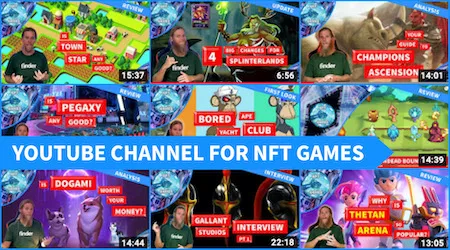
Quick Verdict
GRIT, at a glance, appears to be a visually unspectacular, by-the-numbers battle royale game with a Wild West theme. But it has some novel gameplay twists and, more importantly, a juggernaut distribution partner in Fortnite creator Epic Games.
As such, GRIT is as much a guinea pig as an intriguing game, which will be a defining release in the journey of the NFT games industry, good or bad.
Game information
- When is GRIT's release date? Q3 2022
- What format is GRIT on? PC
- Who is the developer of GRIT? Team GRIT
- Who is the GRIT publisher? Gala Games
- What genre is GRIT? Battle royale
- Is GRIT free-to-play? Yes
- Is GRIT play-to-earn? Yes
- What token is used in GRIT? GALA
- What blockchain is GRIT using? Unknown, but possibly Project GYRI
Announcing a new battle royale game in 2022 doesn't get the same fanfare it did just a few years ago. There were only a handful of titles in this youthful genre before the turn of the decade. PlayerUnknown Battlegrounds (better known as PUBG), had shown what was possible. Fortnite had taken the genre mainstream. And Apex Legends had proven there was room for more.
Fast forward to 2022 and it seems like every major franchise and developer in gaming is working on a battle royale variant. Yet despite this now being a flooded genre, an unheralded indie battle royale called GRIT stands out. Indeed, GRIT could end up being the most important battle royale yet. And possibly, one of the most pivotal titles in gaming history.
Why?
GRIT is a play-to-earn NFT game appearing on a major traditional gaming marketplace. And it's doing so in partnership with the owner of that marketplace, Epic Games.

GRIT gameplay explained
Unlike many NFT games I come across, GRIT is already available in playable form for media and beta testers. Keep an eye out on my NFT games YouTube channel for some footage.
At its core, GRIT doesn't stray too far from the fundamentals of the battle royale genre pioneered by PUBG and Fortnite. Players parachute into the world and try and arm up with loot before finding a way to be the last gamer standing. Or in this case, get on the last train out of there.
There's some interesting variation, of course. The Calamity Storm, which defines the ever-shrinking battlefield can follow targets. For example, a particular horse. Or a train. And if you die, you can get a reprieve from a second chance showdown.
The Old West theme throws an enjoyable twist into the mix, too. Think Red Dead Redemption meets Fortnite and you have the concept in theory here, even if it's still working to get there in practice. The initial map shows expanses of wild frontier crisscrossed with settlements, farms, forests, homes and more. There's a day/night cycle, too.
It's not the prettiest virtual recreation of The West I've come across by any means, but it does convey its theme well enough.
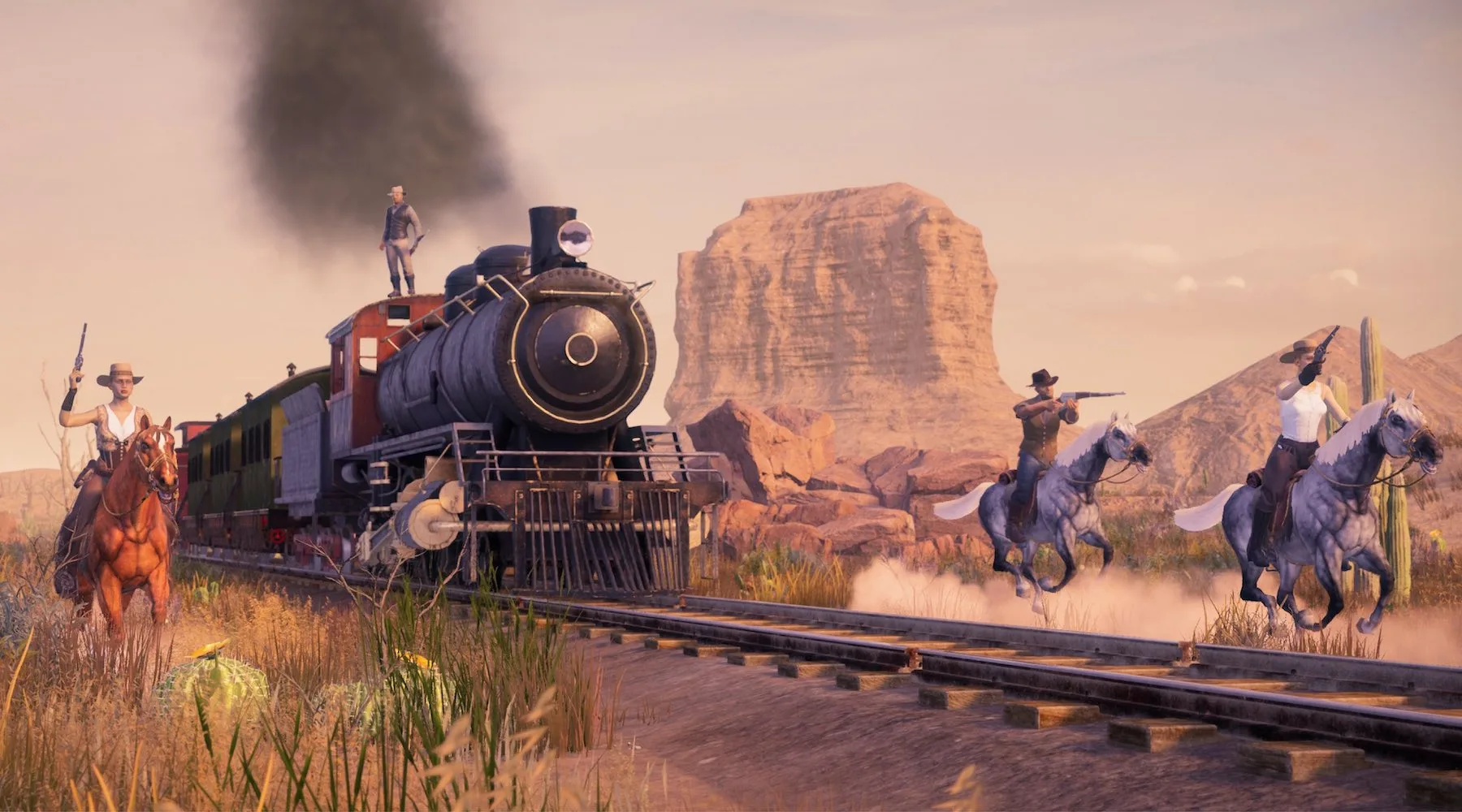
GRIT's combat
Played from the third-person view, you can not only gain access to a run of old-timey weaponry and items but also ride horses and even drive trains to move about the map and stay in bounds. Realistic physics are promised, with the hope they'll drive skill-based gameplay as you consider distance and movement with each shot. Ultimately, 20 different weapons and 225 million loadout variations are promised.
It's unclear what modes will be at play in the final game beyond the standard solo, duo and squads. With the latter, the idea of forming a posse with other players in the Wild West is an exciting prospect. Modes involving horse-riding, saloon fights, poker and street duels are also hinted at but not confirmed.
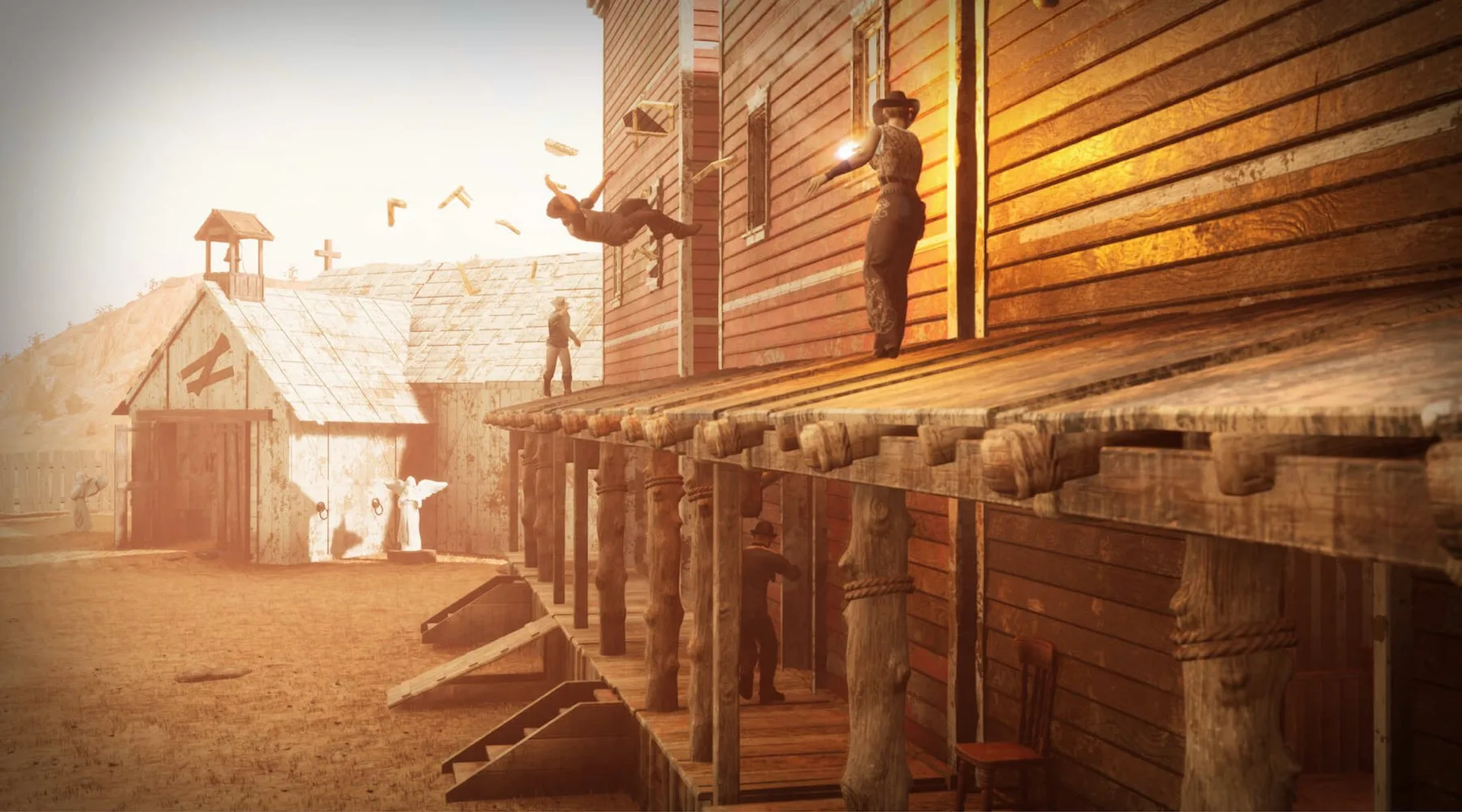
GRIT weapon cards and customisation
Battle royale games generally see combatants land with relative equality; which is effectively helplessness. No items. No weapons. Although the likes of Apex Legends successfully added hero-shooter style mechanics where characters had specific, but meta-balanced, abilities.
GRIT appears to be going for something a little different. There's a persistent nature to the player experience that's more akin to an RPG. Gunslingers will be able to customise their avatar with more than just cosmetics, levelling their skills down certain class types. You'll also be able to level up the bond you have with your trusty horse.
I like this concept in theory, but if Gala Games, Team GRIT and Epic Games can't work out a way to ensure each battle begins with players at level pegging, then it could all go pear-shaped. Pay-to-win is a disaster in any genre, but particularly with battle royales.
With that in mind, the existence of weapon cards is something to watch closely. Only because it's unclear whether you bring these into a battle from a collection you've assembled or if they are only found in-game. Thankfully, it appears that it's the latter.
Weapon cards are like playing cards, but featuring weapons. By finding these cards or looting them from felled foes, you can assemble poker hands. The better the hand, the greater the perks you get to customise your skills and the more special bonuses your weapons will receive.
As you can only hold 5 cards at a time, you'll need to "gamble" on what to keep or throw away. It's a very cool idea. A game within the game that I really hope ends up in practice as fun as it sounds on paper.
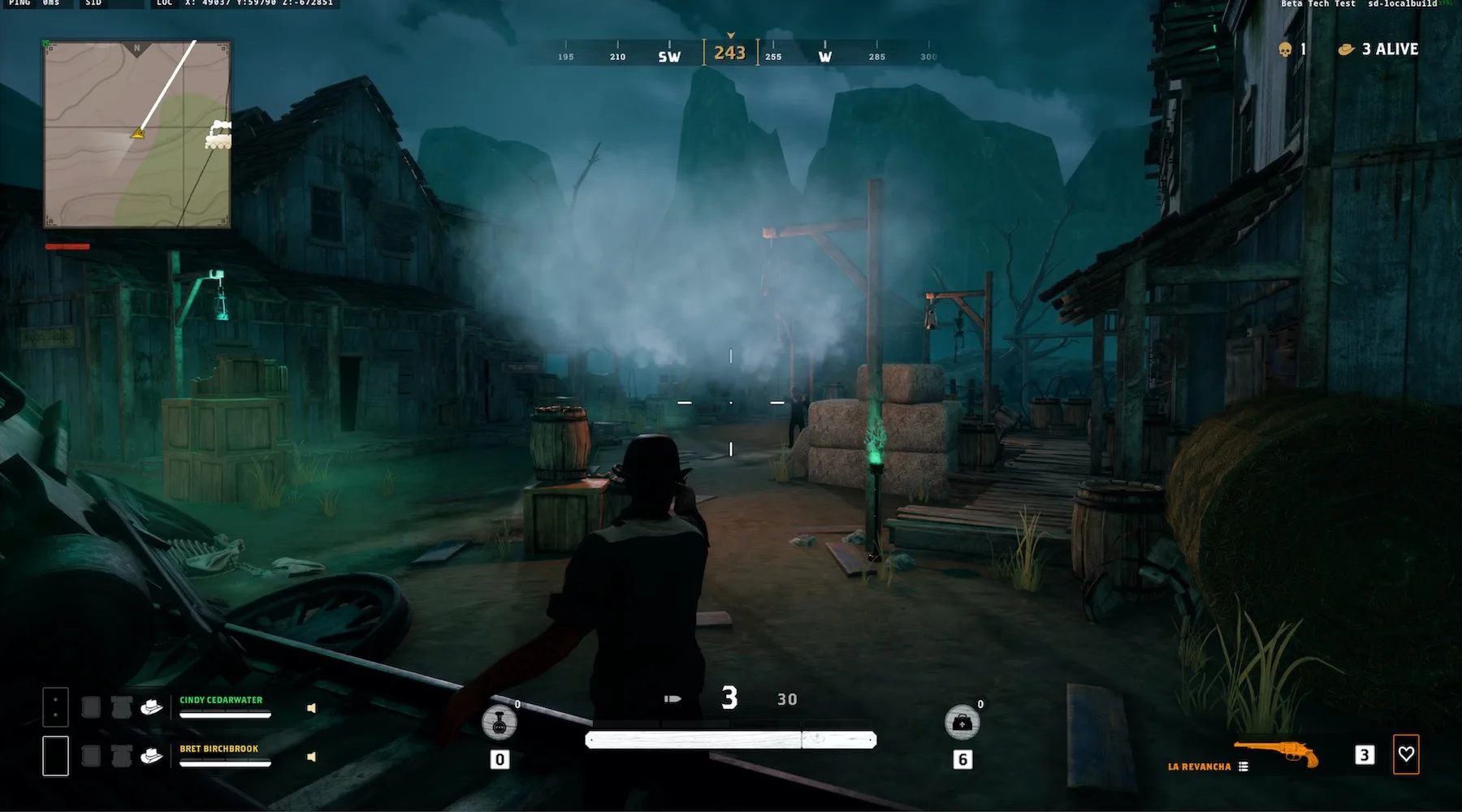
GRIT NFTs, free-to-play and battle pass explained
Let's get the good news out of the way. Yes, GRIT is a free-to-play experience. You don't have to own an NFT in order to get in and just enjoy the experience. Similar to the model popularised by Fortnite, you can simply get in and start playing to earn cosmetics and rewards through performance. Or you can buy a battle pass to unlock even cooler stuff.
Your first tier to investing in GRIT is to buy that battle pass. It's unclear if the base cosmetics unlocked in F2P mode or through the battle pass will be NFTs. My gut feeling is they won't be. I suspect they'll be assets you have, but don't own.
But there is a second tier of items that you do own. The key NFT is going to be your Generative Hero. This is a character that will not just be your avatar in game but will grow with you persistently across the experience, improving their skills down certain class paths. A Hero also comes with cosmetic loadout slots, although what this means has not been defined. I suspect the rarer the Generative Hero, the more cosmetics you can wear.
Your horse can also be an NFT. The documentation suggests that your horse and character can have a bond that improves over subsequent games.
I've seen nothing yet to suggest that weapon cards, items, guns or cosmetic gear will be NFTs. This is good from a pay-to-win perspective. But it does mean you won't be able to sell loot you've unlocked from the battle pass to other players as you won't have provable ownership in the marketplace.
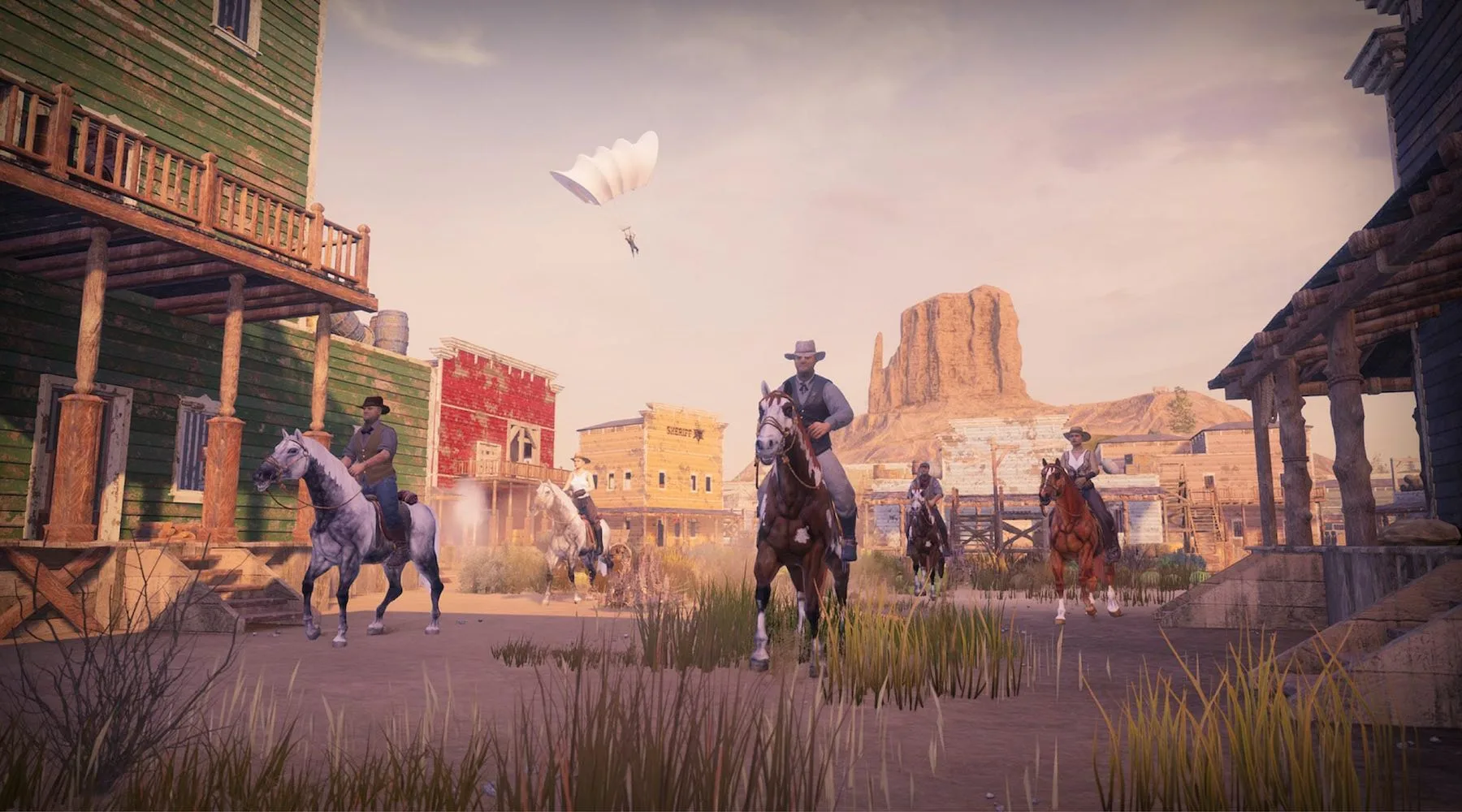
Cowboy or outlaw?
The biggest question for me is, how many players can have their own NFT hero? Only 10,000 Generative Heroes exist at launch. Obviously, Gala Games wants more people playing GRIT than that, so how is it going to work?
Will there be some sort of breeding mechanic to bleed more NFTs into the market in a way that doesn't rug pull the economy? Is GRIT going to end up in a place where most gamers are required to rent NFT horses and heroes from the owners to make the most of the game?
These questions face all P2E NFT games, but not all NFT games are on the Epic Games Store. The audience potential here is huge, but it's also more inclined towards traditional game experiences. Adding barriers to entry is a risky proposition for a title that's legacy will be defined by its success (or not) as a gateway game to web3.
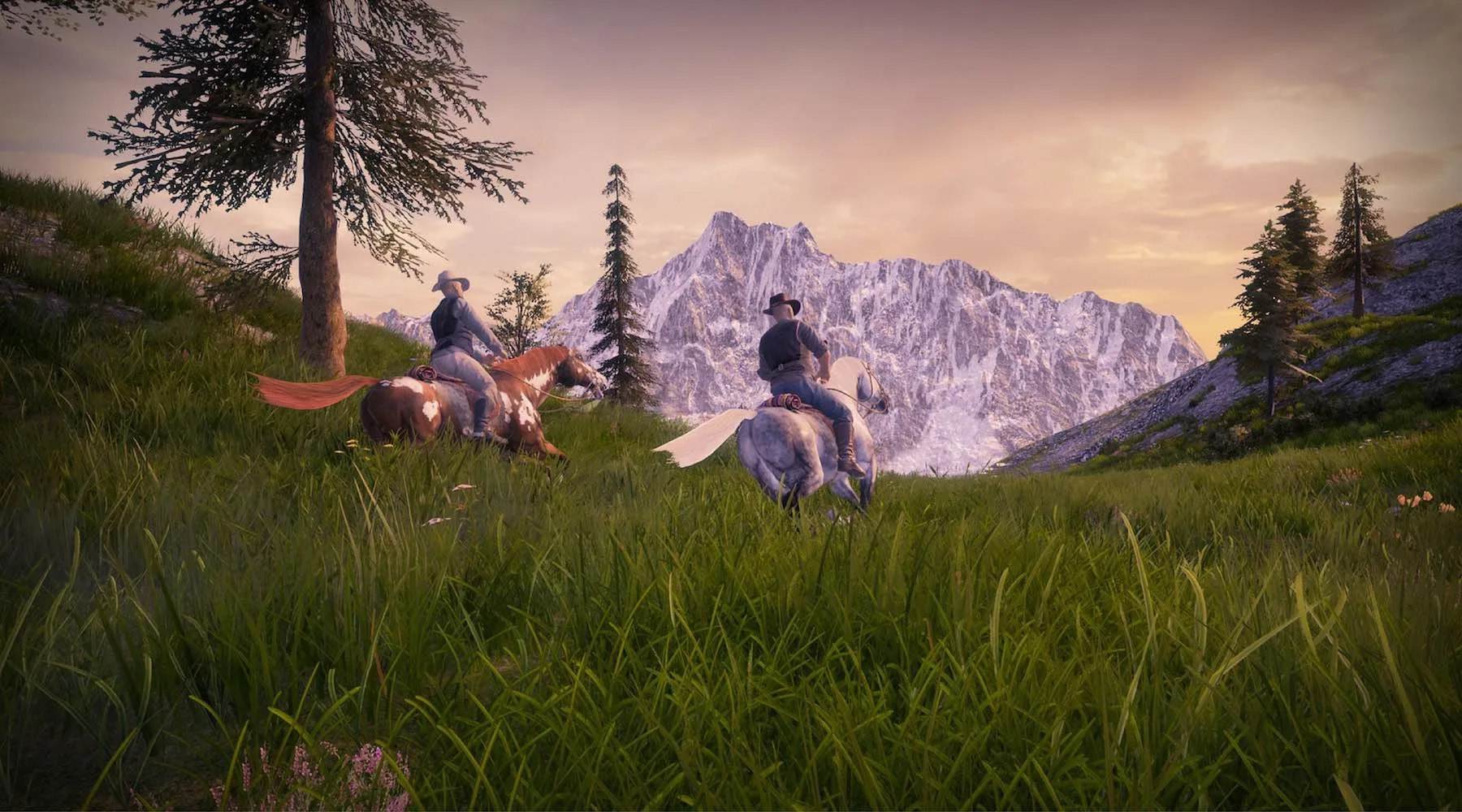
How does play-to-earn work in GRIT?
Everyone who plays GRIT will be able to earn the in-game token based on their performance. It will be possible to grind your way into enough GALA tokens to buy yourself an NFT. This is great news for scholars. However, there are modifiers that will increase what you earn in any given battle.
Owning the battle pass will increase the number of GALA tokens you earn. But you'll earn even more if you own a Generative Hero. And if GRIT follows the pattern of many play-to-earn games before it, the bonus modifier you get for owning a Hero will likely be higher the rarer the NFT. While not said, I suspect owning an NFT horse will also act as a reward modifier.
There has been no mention yet of any sort of rental marketplace for scholars and guilds. But this will likely come.
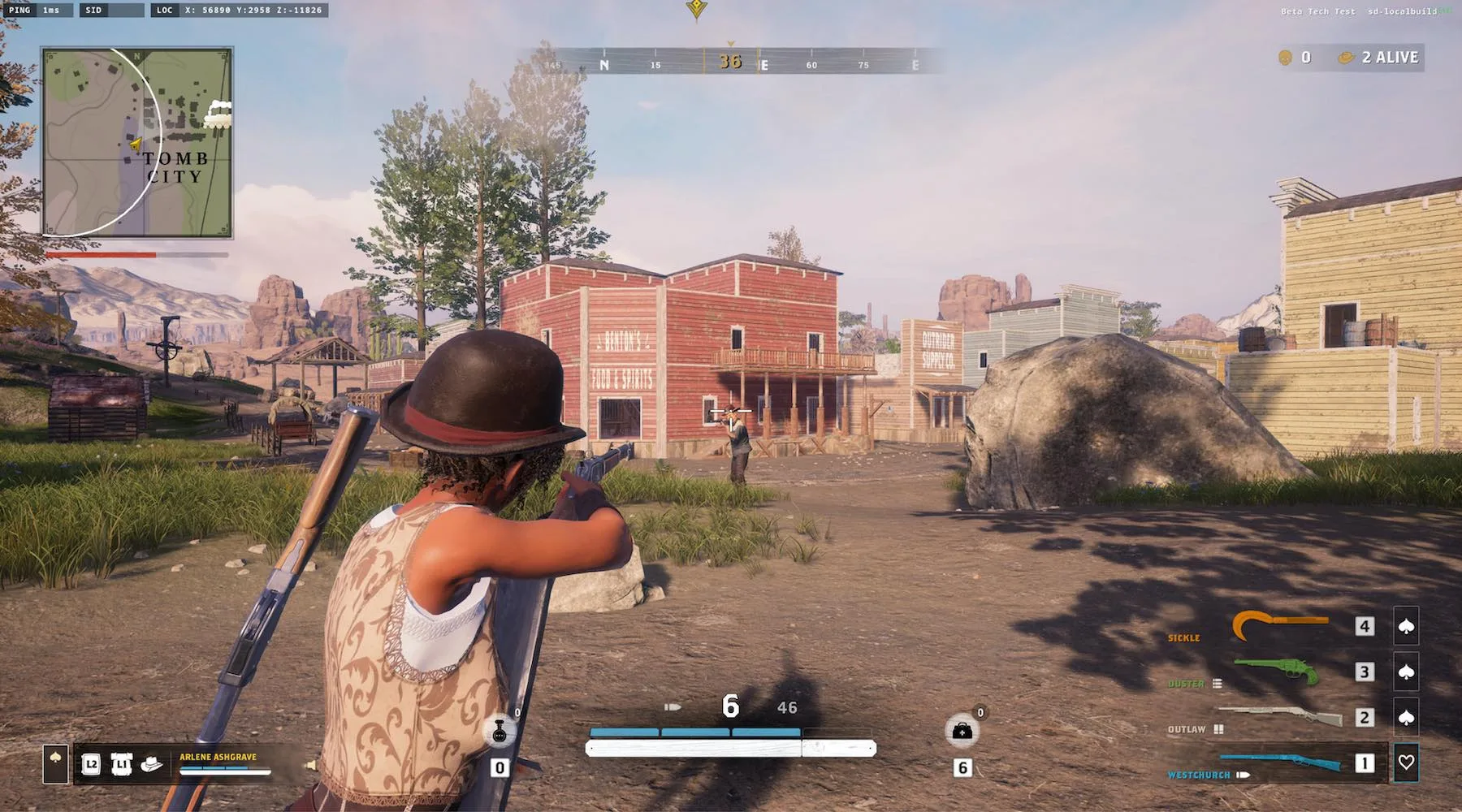
GRIT tokenomics explained
Gala Games has not detailed the tokenomics for GRIT as of the time of this writing. You can safely assume the GALA token will be in play as it sits across all the titles on the GALA platform. GALA is the governance token. However, we usually see at least one other token available in-game as your post-game reward. So, keep an eye out for an announcement about that.
Team GRIT meets Gala Games
For the majority of its life, indie developer Team GRIT was not developing its battle royale western to be an NFT game. Indeed, it first appeared on Valve's Steam PC games store. Valve has been very clear that it won't have any NFT games on the store, so chances are the listing is already gone by the time you read this.
In early 2022, Gala Games acquired Team GRIT and its game, GRIT, for the Gala platform. Gala Games is a leading publisher in the NFT games space. It's already released the successful and fun Town Star and has nearly 20 other games in development.
As such, there was only a few short months between Gala Games' acquisition of GRIT and the announcement it was coming to the Epic Games Store. That's not much time to integrate P2E mechanics, which bodes well in my opinion. This was a game first, and a token economy has been layered on top of it. Much better than the other way around.
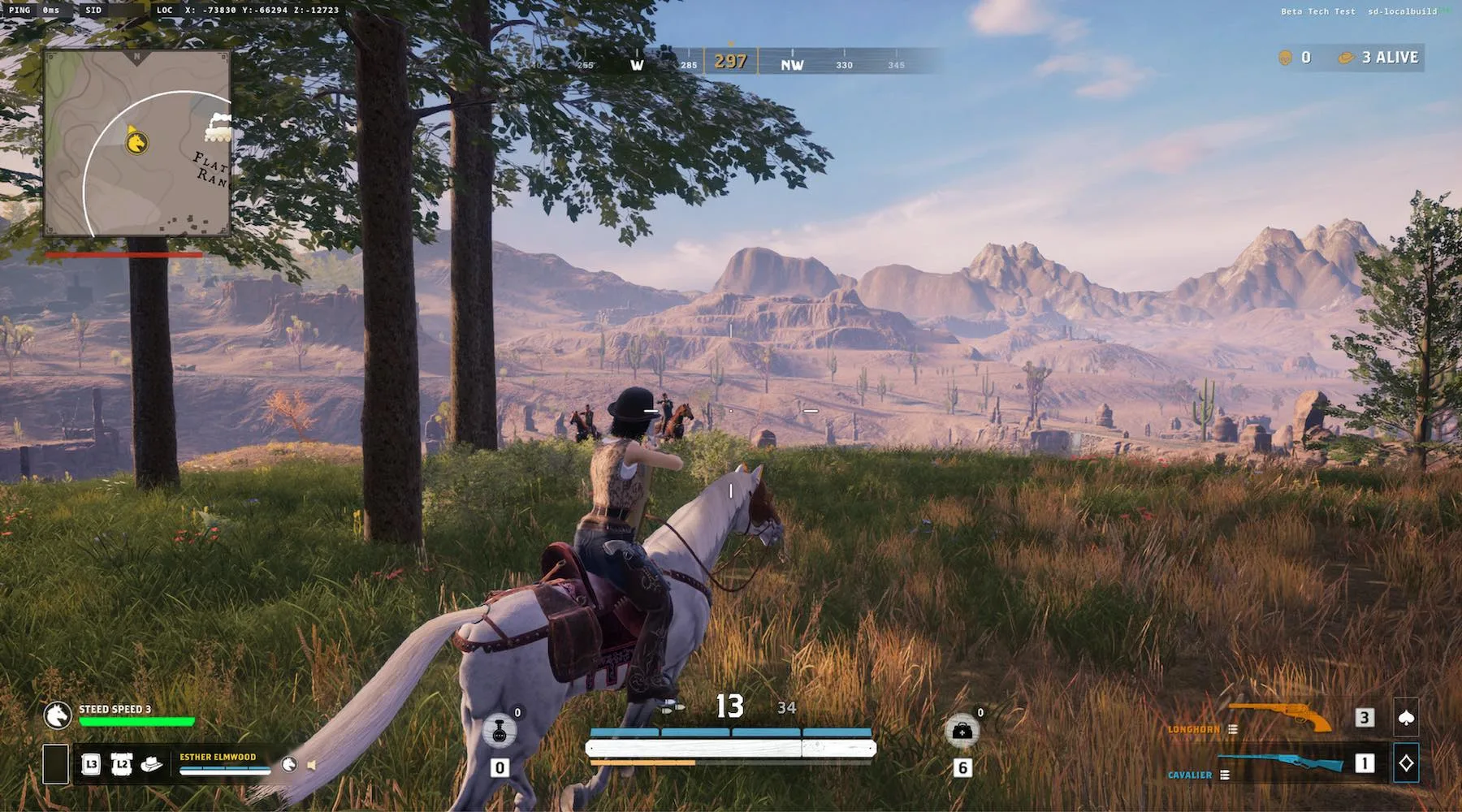
Why Epic Games involvement is a big deal
When I cast my eyes across the players in the blockchain gaming space, Gala Games stands out. It's doing great things and making big waves. And so far, it's got a focus on fun gameplay that most NFT games developers don't have. Despite being a star in the blockchain gaming world, few traditional gamers would know a thing about them.
On the other hand, every gamer knows Epic Games. You could mount an argument that Epic Games is the most influential company in gaming. In part that's due to its games. Successful titles such as Unreal Tournament, Gears of War, Rocket League and Infinity Blade dot its past. But it's Fortnite – which has around 400 million registered accounts – that stands out. It's the biggest game in the world right now.
Then you have the fact Epic Games owns Unreal Engine. This is a widely used middleware solution utilised by a huge chunk of the AAA and indie gaming scene. Finally, there is the Epic Games Store, a retail outlet with over 200 million users.
GRIT is releasing on the Epic Games Store, so technically it has a potential 200 million strong audience on day one. But so do many other games. The key here is that Gala Games isn't just releasing GRIT on the Epic Games Store – Gala Games and Epic Games are doing it in partnership.
The details of that partnership aren't clear, but Epic Games has a vested interest in seeing how GRIT performs. Epic Games is a known supporter of blockchain gaming and has been busy working out how it can best leverage blockchain in Unreal Engine and in games like Fortnite. With Gala Games and GRIT, it has its Epic Games Store guinea pig.
With that in mind, GRIT could get some preferential treatment in finding that 200 million audience.

GRIT review: First impressions
There's still a lot we don't know yet about GRIT. It works, and while it might not be the most revolutionary of gameplay experiences, that puts it ahead of many NFT game pitches I've come across. It's a popular and proven genre, and I quite like the Western theme and quirky gameplay ideas like the poker collectables and Calamity Storm movements.
But the game will forever be overshadowed by the bigger story here – the partnership between one of the major players in the blockchain gaming scene, Gala Games, and the AAA behemoth that is Epic Games. How will that evolve? What will Epic Games do to position the game once it's launched? Will traditional gamers give it a chance? It's all very intriguing.
Ask a question
More guides on Finder
-
What are cross-chain NFTs?
Need to put an NFT on another blockchain? Here’s how.
-
How to make money in the metaverse
Learn how you can bank in on the metaverse hype or carve out a career in this expansive virtual space.
-
How to mint an NFT
Step-by-step guide on minting an NFT.
-
How to join the metaverse
Learn about different types of metaverses and what you’ll need to join one.
-
Champions Ascension guide: A P2E NFT action-RPG by Jam City
What we know so far about the upcoming NFT-based blockchain game, Champions Ascension
-
How to play Decentraland
Learn how to play with one of the largest cryptocurrency metaverses in the world.
-
NFT statistics reports for 2022
The definitive ranking of the NFT adoption across 26 countries.
-
How and where to buy NFTs
Read our step-by-step guide to buying NFTs, including what you need to get started and which marketplaces you can use in Australia.
-
How to make an NFT
Creating an NFT is easier than you might think. Here are 5 steps to make an NFT, and other details you should know.
-
List of the 50 best Axie Infinity guilds plus a guide for scholars
Looking for an Axie Infinity scholarship? This NFT blockchain game guide lists all the best guilds with tips on how to be the best scholar.
